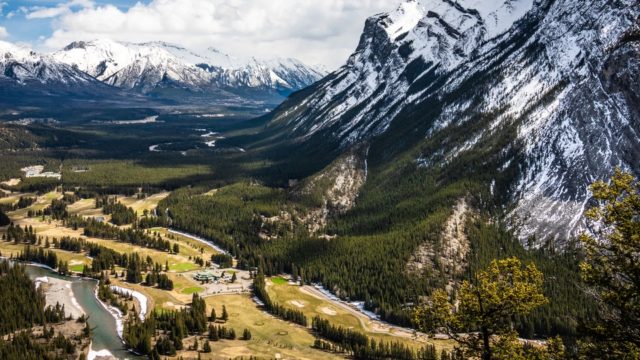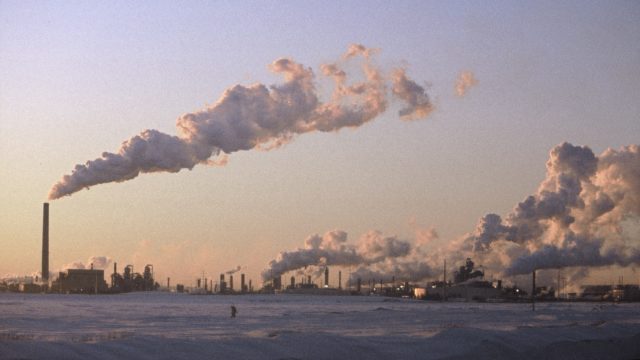In Canada, each level of government has powers to protect the environment. From municipal bylaws to federal legislation, Ecojustice navigates this shared environmental jurisdiction to defend nature, combat climate change and fight for your right to a healthy environment.
Canadians often boast of our beautiful natural spaces – but how much do you actually know about the laws that protect them? We wanted to break down the laws and legal frameworks Ecojustice works with to fight for a better environment in Canada. One of the most critical environmental laws we work with is Canada’s Impact Assessment Act, although the Act is not without limitations.
For supporters who are familiar with Ecojustice’s work, you will have heard a lot about impact assessments. At the federal level, impact assessments fall under the Impact Assessment Act (IAA), an act that is key to holding governments and industry accountable for thoroughly evaluating the environmental and community impacts of projects as well as the effects of projects on Indigenous peoples and their rights. At Ecojustice, we utilize the IAA in a lot of our work to fight projects like coal, oil and gas exploration, and so on, or to mitigate the most harmful effects of these projects.
Where did the IAA come from?
Get ready for some acronyms! The IAA has taken many forms in its decades-long existence, beginning as environmental assessments conducted under Canada’s Environmental Assessment and Review Process Guidelines Order (EARPGO), adopted in 1984. The law was revamped in 1992 when the Canadian Environmental Assessment Act (CEAA) was introduced as law with a stronger and more robust environmental impact assessment process; the Act came into force in 1995.
Protections were clawed back in 2012 during the Harper era when the original version of CEAA was repealed and replaced with the weaker CEAA, 2012. Environmental groups including Ecojustice, and everyday Canadians concerned about the climate crisis, were instrumental in lobbying the government to not only restore but improve the Act. Which leads us to…
The new and improved (but still imperfect) IAA
In 2019, the federal environmental assessment system was overhauled again, replacing CEAA, 2012 with the new Impact Assessment Act. The legislation introduced changes to review processes for major projects that affect the public interest and cause effects within federal jurisdiction.
The new Act revised the list of activities that trigger an impact assessment and further detailed how the assessment process works. The IAA mandates a robust approach that includes additional steps to assess the environmental, social, health, economic, and cultural impacts of major projects, and the effects of projects on Indigenous peoples and their rights.
The new law improves upon the Canadian Environmental Assessment Act, 2012 by:
- Bringing important issues to light early in the planning phase, which heads off delays and litigation;
- Defining criteria for whether a project is in the public interest that address sustainability, environmental effects, mitigation measures, climate change, and effects on Indigenous peoples and their rights; and
- Providing greater transparency on important environmental decisions, with no more decision-making behind closed doors for reasons that are not disclosed.
Another tool introduced with the new Act is regional assessments. These are intended to go beyond project-focused impact assessments to understand the regional context, identify cumulative effects and inform individual project impact assessments. Strategic assessments are intended to perform a similar helpful guiding role, although for topics like climate change.
How does Ecojustice use the IAA?
For projects with effects that fall within federal jurisdiction, the IAA is one of the most important tools in our arsenal to protect communities and our environment from adverse impacts. The Act is also intended to promote cooperation and coordination between federal and provincial governments.
Certain projects listed on the IAA’s Physical Activities Regulations (the “project list”) are automatically designated for assessments, including projects above a certain size or new projects in National Parks or Protected Areas. When an identified project that is not listed on the project list has potential to cause significant environmental impacts or is of particular public interest, Ecojustice will request that the Minister of Environment and Climate Change of Canada designate the project for an impact assessment. This is often supported by public pressure in the form of petitions and letters signed and sent by our supporters.
If a thorough, holistic, and comprehensive analysis of a project’s impacts is properly conducted, the outcome may result in the project either:
- being approved, subject to conditions intended to address environmental and further impacts; or
- being denied, if the impacts on the environment, Indigenous peoples and rights, and other areas within federal jurisdiction are too great.
Ecojustice also uses this important piece of legislation to:
- get a project designated for an assessment to review and mitigate harm. This year, we successfully lobbied for a controversial highway project in Ontario to undergo an assessment after the provincial government tried to push the project through without proper scrutiny. With the help of 46 other environmental, Indigenous, health, civil society, and faith organizations, and tens of thousands of Canadians, Ecojustice and its clients scored an important victory when the Minister of Environment and Climate Change agreed to designate the controversial Vista coal mine expansion for an assessment.
- challenge assessments when they have not sufficiently considered the social, economic and health impacts on a community as well as the environmental impacts of a proposed project. On behalf of our clients, World Wildlife Fund, Ecology Action Centre, and Sierra Club Canada Foundation, we are suing the federal government over a regional assessment we contend failed to properly consider the cumulative impacts of oil drilling in Newfoundland and Labrador’s offshore waters.
- force greater scrutiny to ensure that projects that cause unacceptable effects on the environment are not allowed to proceed or are subject to strict conditions to mitigate harm. Ecojustice has requested an impact assessment for a controversial liquified natural gas (LNG) facility in Nova Scotia; the project has been plagued by insufficient funding and opposition from Indigenous, environmental, and other community groups.
Shortcomings of the IAA
While the IAA is an important environmental law in Canada, the Act has many shortcomings that prevents the law from being truly comprehensive and equitable, as is the case with many laws constructed within a colonial framework.
Among other things, these shortcomings include a lack of clear and enforceable follow-up mechanisms to ensure sustainability after projects are built, limited scope for assessing smaller projects, and a lack of clear criteria and accountability for certain decisions.
As it is currently structured, the IAA is still vulnerable to misinterpretations that uphold the status quo to the continued detriment of Indigenous communities and decision-making. For example, the Act explicitly allows for the federal government to co-lead an assessment with an “Indigenous governing body.” Despite these new provisions, the Agency and Minister refuse to consider co-governance arrangements with First Nations, repeatedly stating that a regulation is first required.
Though the Act explicitly provides for this collaboration, the federal government has not implemented the Act in a manner upholding its promises to implement UNDRIP and to work in partnership with Indigenous nations.
Another of the Act’s most significant shortcomings is the discretion left to the Environment and Climate Change Minister, the Impact Assessment Agency of Canada, and Cabinet in implementing various aspects of the legislation. This can mean certain projects are not mandated to undergo assessments — leaving the environment and communities vulnerable.
The statute also does not include specific requirements to reduce climate impacts. While the Act requires the ‘consideration’ of climate change, it still leaves the door open for federal approval of high-carbon projects that are out of step with Canada’s critical climate targets.
The push for stronger protections
As we have seen time and again in our work, the law is a powerful tool for change. The IAA exists because of the relentless and dedicated work of advocates – people like you who work to make better laws and a better country for all.
While the IAA was created with ambitious objectives of introducing transparency, accountability and strong protections for communities and the environment, there are shortcomings that must be addressed to meet those goals.
Through our work and with the support of Canadians just like you, Ecojustice remains committed to the fight to defend this cornerstone piece of environmental legislation against legal challenges from the provinces and ensure it is implemented in a way that safeguards an environmentally-safe future for all Canadians.
How does the Impact Assessment Act impact you?
The IAA helps protect all Canadians by ensuring that designated projects are considered and carried out in a careful and precautionary manner, avoiding significant adverse effects on communities and the environment. But the legislation has shortcomings and is only as good as its enforcement.
A vital component of the IAA is the ability for the public to ask questions and hold the government and industry accountable for projects that affect our communities and environment. Assessments under the IAA must provide opportunities for meaningful public participation; this is intended to ensure an open, balanced process that gives the public a say.
Community and Indigenous knowledge play a vital role in identifying and addressing potential impacts of projects at an early stage. Public participation starts before formal impact assessment begins, with continued opportunities for public feedback throughout.
Ways for you to get involved
The IAA is not just a tool for governments, lawyers, and industry. Canadians play a pivotal role in ensuring projects undergo comprehensive evaluations that consider all the possible impacts of a proposed project. Visit the Canadian Impact Assessment Registry for information on projects and current opportunities to participate.
Ecojustice is going to court to challenge Alberta Premier Jason Kenney’s latest attempt to derail the IAA. A win would ensure the IAA is implemented throughout Canada, providing greater clarity and certainty about projects to communities and industry alike. This work is only possible thanks to your support – thank you!








